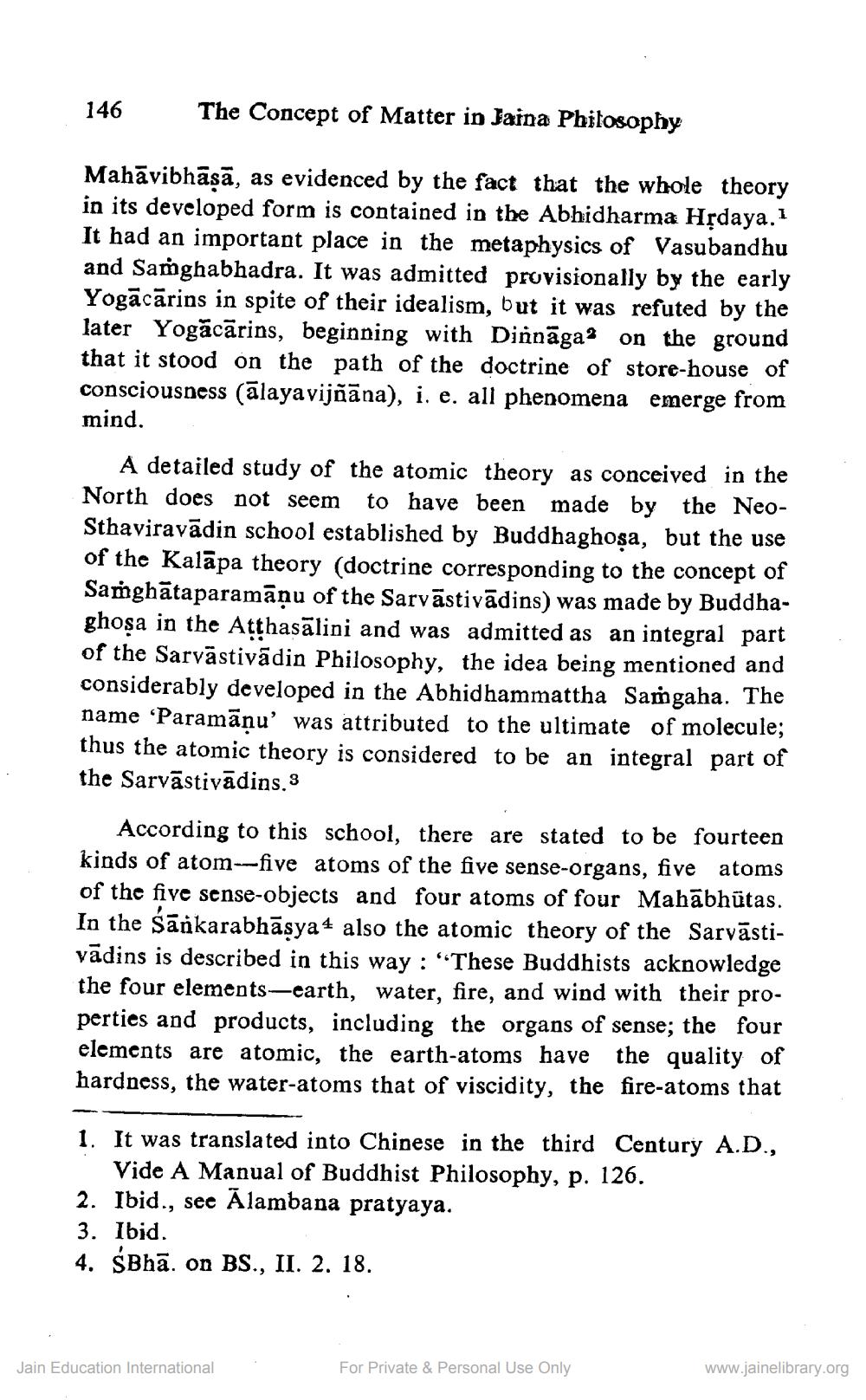________________
The Concept of Matter in Jaina Philosophy
Mahāvibhāṣā, as evidenced by the fact that the whole theory in its developed form is contained in the Abhidharma Hṛdaya.1 It had an important place in the metaphysics of Vasubandhu and Samghabhadra. It was admitted provisionally by the early Yogacarins in spite of their idealism, but it was refuted by the later Yogacarins, beginning with Dinnaga on the ground that it stood on the path of the doctrine of store-house of consciousness (ālayavijñāna), i. e. all phenomena emerge from mind.
146
A detailed study of the atomic theory as conceived in the North does not seem to have been made by the NeoSthaviravādin school established by Buddhaghosa, but the use of the Kalapa theory (doctrine corresponding to the concept of Samghataparamāņu of the Sarvāstivādins) was made by Buddhaghosa in the Atthasalini and was admitted as an integral part of the Sarvāstivädin Philosophy, the idea being mentioned and considerably developed in the Abhidhammattha Samgaha. The name 'Paramāņu' was attributed to the ultimate of molecule; thus the atomic theory is considered to be an integral part of the Sarvastivādins.3
According to this school, there are stated to be fourteen kinds of atom-five atoms of the five sense-organs, five atoms of the five sense-objects and four atoms of four Mahabhütas. In the Sankarabhāṣya also the atomic theory of the Sarvāstivadins is described in this way: "These Buddhists acknowledge the four elements-earth, water, fire, and wind with their properties and products, including the organs of sense; the four elements are atomic, the earth-atoms have the quality of hardness, the water-atoms that of viscidity, the fire-atoms that
1. It was translated into Chinese in the third Century A.D., Vide A Manual of Buddhist Philosophy, p. 126.
2. Ibid., see Alambana pratyaya.
3. Ibid.
4. ŚBha. on BS., II. 2. 18.
Jain Education International
For Private & Personal Use Only
www.jainelibrary.org




